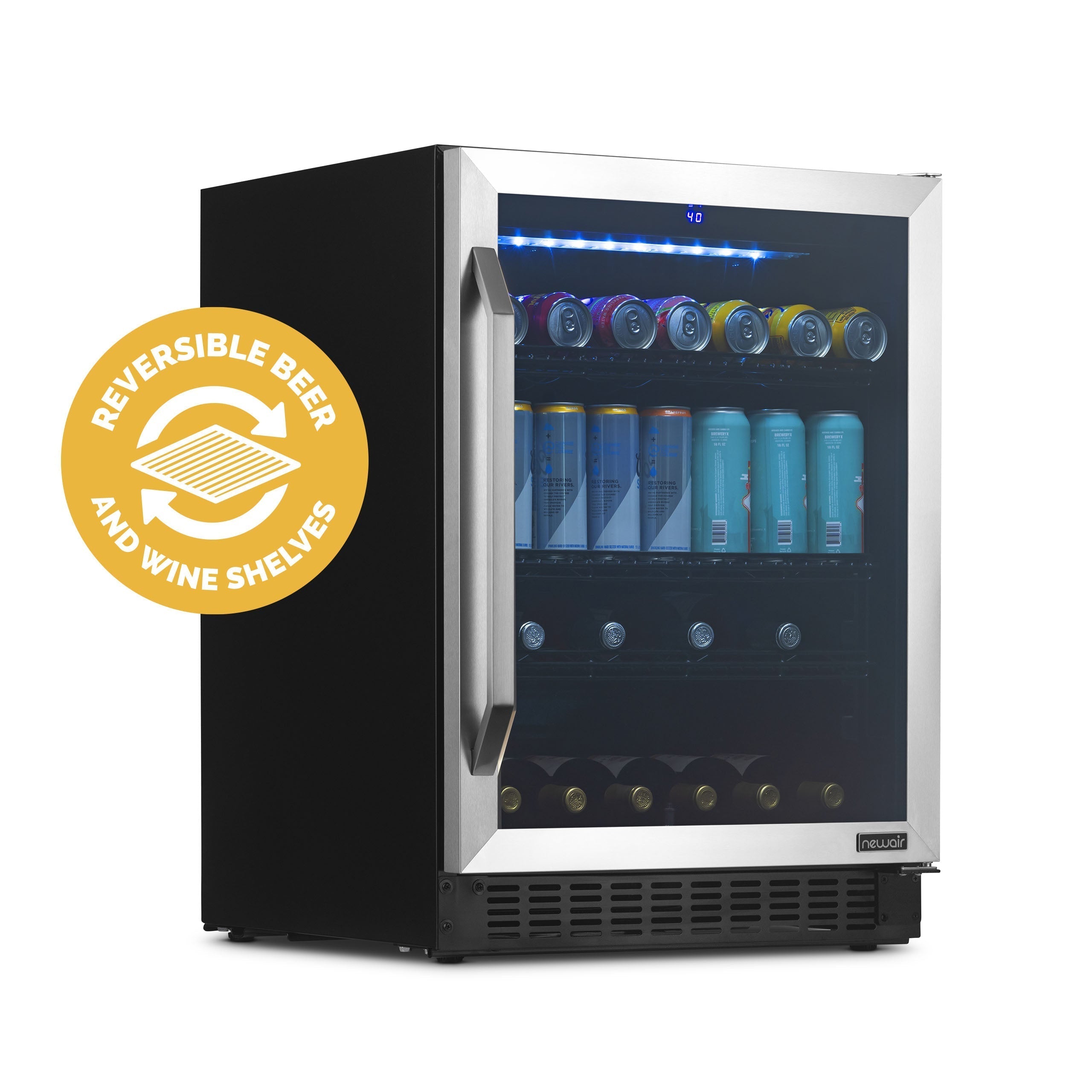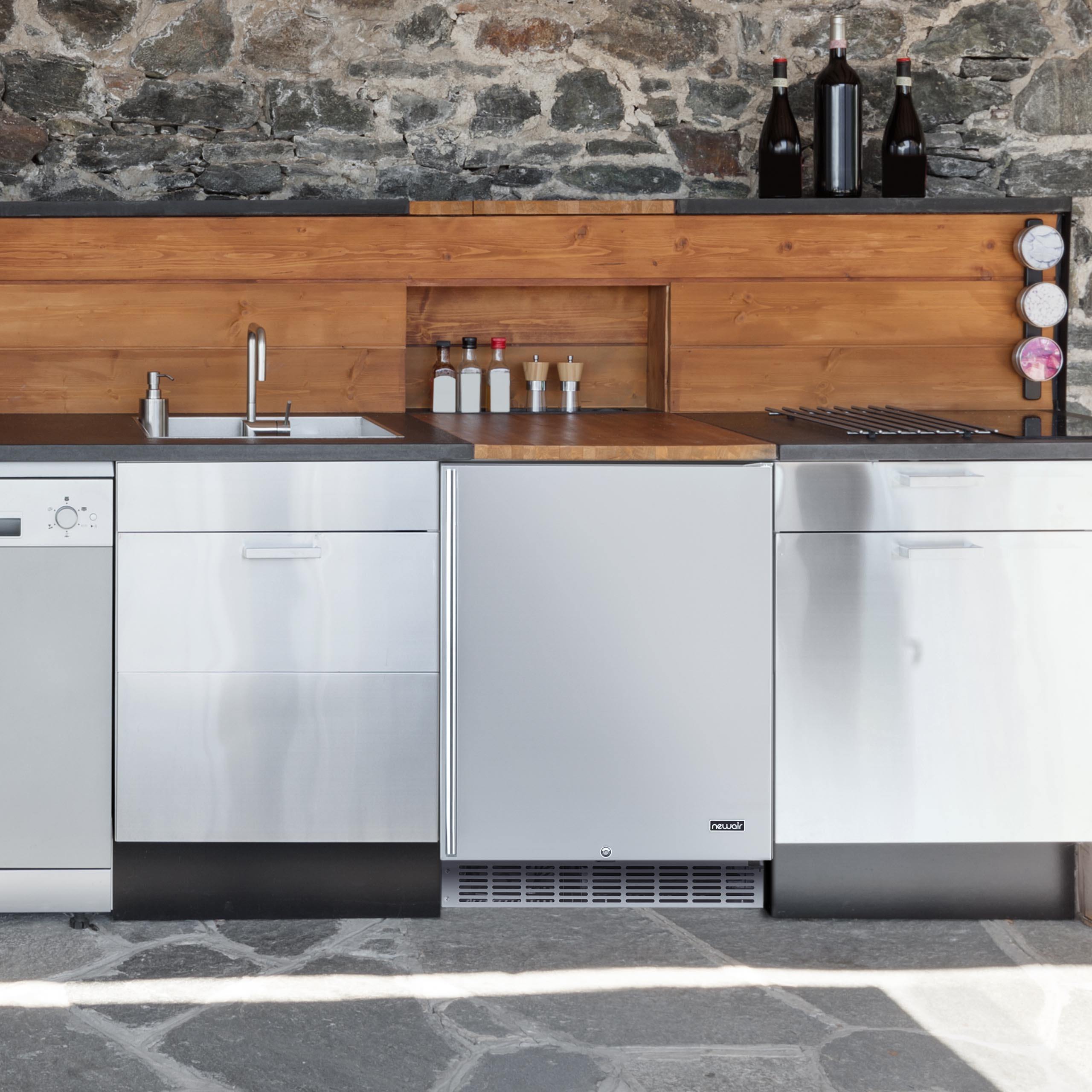How to Prevent Mold in Your Wine Cooler
Mold breaks down dead organic matter and can grow practically anywhere, even your wine cooler. Mold spores are far more common than you may realize. They drift through the air and enter your cooler whenever you open the door. Once they’re inside, they can latch onto any surface and start growing if the conditions are right. Fortunately, their growth cycle is easy to disrupt if you have the tools necessary to control the humidity inside your wine cooler.
Why Wine Coolers Are Susceptible to Mold

Mold requires a four things in order to grow: a food source, moisture, darkness, and the right temperature. Sadly, these conditions are very similar to the conditions necessary to store wine. Wine requires moisture in order for corks to maintain a proper seal, it requires darkness to prevent ultraviolet light from breaking down its chemical bonds, and it requires a stable temperature of 45°-55°F in order to maintain its aroma and flavor. Wine bottles are also a food source. Though some molds can survive on nothing but moisture, most of the mold that gets into your wine cooler feeds on the corks and labels of your wine bottles. Some even consume the wine fumes that seep through the cork.
How to Prevent Mold in Your Wine Cooler
The easiest way to prevent mold is to control moisture levels in your wine cooler. Excessive moisture tends to be a big problem in places that are naturally humid, such as Florida. It’s also a problem during the summer, when increased temperatures raises the amount of water vapor in the air. Moist air enters your wine cooler whenever you open the door, so the first step to controlling moisture levels is to leave the door shut as much as possible. A wine storage refrigerator from NewAir is equipped with a security lock that prevents it from being opened without your permission.
Besides limiting the amount of moisture entering your wine cooler, you’ll also need a way to soak up the excessive moisture inside. Fortunately, there are several commonly available moisture absorbers to choose from. All of these are available online or at your local supermarket.
|
Common Moisture
Absorbers
|
Baking Soda
|
|
Baking soda is an environmentally
friendly moisture absorber.
|
Chalk
|
|
Chalk is made of
either calcium carbonate, calcium sulfate, or magnesium silicate. These are
salts, metals chemically bonded to non-metals, and all salts absorb water. Place
a mesh bag filled with chalk sticks in your wine cooler. As air moves through
the bag, the chalk will absorb the moisture in it
|
Clay Absorbers
|
|
Clay pellets are permeable and
have a high surface area, which allow them to absorb large quantities of water.
You can purchase them in sealed packets or in large tubs of loose granules
|
Silica Beads
|
|
Silica gel is a granular,
vitreous, porous form of silicon dioxide made synthetically from sodium
silicate. It has a high specific surface area that lets is adsorb up to 40 times
its weight in water. Available for purchase in sealed packets or tubs of loose
beads
|
Calcium Chloride
|
|
Calcium Chloride is a salt with a
crystal lattice structure that allows it to absorb large amounts of water. One
of the strongest moisture absorbers available. Sold in tubs and sealed packets
|
Not every moisture absorber is equally effective. Due to differences in chemistry and their molecular structures, some will absorb larger amounts of moisture faster and more effectively than others. If you see any condensation or water droplets in your cooler, switch to a stronger absorber such as silica or calcium chloride.
Mold grows best in environments where the relative humidity is over 50 percent. If you’re uncertain whether your absorber is doing enough to stabilize moisture levels, buy a hygrometer. It’s a small device that monitors humidity levels in closed environments. Place it in your wine cooler and track the changes in your moisture levels. If they stay the same or continue to climb after switching to a stronger moisture absorber, you may have a leak in your wine cooler. Check the rubber seal along the door and check the body of the wine cabinet for cracks. If you find any, have them fixed as soon as possible. If moist air can enter your wine cooler freely, it can overload your moisture absorber and create the conditions for mold growth.
Corks & Humidity

Corks do more than just keep your wine in the bottle. They also control the amount of oxygen your wine is exposed to. When wine’s exposed to high levels of oxygen, will start turning into acetic acid, also known as vinegar. To prevent this, corks have to remain hydrated. It’s why experts recommend storing wine on its side. The contact between the wine and the cork keeps the cork from drying out. However, corks can also dry out if they’re exposed to sufficiently dry air. When this happens, the cork shrinks and cracks, allowing oxygen to seep in and upset the wine. This is why choosing the strongest moisture absorber is not always the best course of action. Depending on the natural moisture levels in the air, it may lower humidity levels too far and inadvertently damage your wine. Ideally, you should be able to keep your wine cooler below 50 percent humidity, but above 40 percent.
How to Remove Mold From Your Wine Cooler
If mold does manage to get into your wine cooler, you’ll need to remove it before it can cause too much harm. There are several common, household chemicals that will kill mold, though not every one will be well suited to every wine cooler. Some wine coolers store wine using wooden shelves, and these shelves can cause problems because mold is not surface level parasite. If it begins growing on a porous material, such as wood, it will send down roots. If they’re not killed off, these roots will grow back and reinfect your cooler. Not every chemical is capable of doing this, so if your cooler has wooden shelves, make sure you choose the right cleanser.
|
Bleach
|
Effective on hard, non-porous
surfaces. Bleach is corrosive, so always use it in well-ventilated areas. Mix
with water at a 1:10 ratio – 1 part bleach for every 10 parts water
|
|
Ammonia
|
Effective on hard, non-porous
surfaces. Produces pungent fumes and may irritate your eyes and skin, so always
use it in well-ventilated areas. Rubber gloves and goggles are recommended. Sold
in 5-10 percent concentrations, so no dilution is necessary
|
|
Borax
|
A white crystalline powder.
Doesn’t emit fumes, so it’s safe to use in poorly ventilated areas. Penetrates
wood. Mix with water at a 1:10 ratio – 1 part borax for every 10 parts water
|
|
Baking Soda
|
Alternative to bleach and ammonia.
Penetrates wood. Mix with water at a 1:1 ratio to form a paste that will kill
mold
|
|
Vinegar
|
Wills 82% of mold spores.
Penetrates wood, but may also leave lingering odors behind. Can be safely mixed
with Borax to produce an extra-strong mold killing solution
|
When cleaning your wine cooler, always unplug it and remove the wine bottles before you begin. Use a brush or rag to apply the cleaning solution evenly over all the surfaces inside your wine cooler. All surfaces have to be cleaned, not just the surfaces where mold is growing. Mold spores can adhere to any surface and are capable of remaining dormant for several weeks, so everything has to be wiped down: top, sides, bottom, door, and shelves. If you’re using bleach or ammonia, be sure to wipe the cooler down with clean water after you’re done cleaning to eliminate any chemical odors that may be left behind. Clean multiple times if necessary. Bleach and ammonia fumes can seep into the cork and affect the taste of your wine. Vinegar also leaves odors, but these will naturally dissipate after a few hours, so all you need to do it wait until they’re gone.
Never mix bleach and ammonia. It produces a toxic gas that can be fatal.
If you’re using borax or baking soda on wooden shelves, use a soft cloth and apply a light coating to prevent any damage or discoloration. If you leave a thin layer of Borax or baking soda on the inside of your cooler. It will prevent new mold spores from taking root and prevent future growths. Borax and baking soda absorb odor, so they won’t affect the taste of your wine.




0 comments